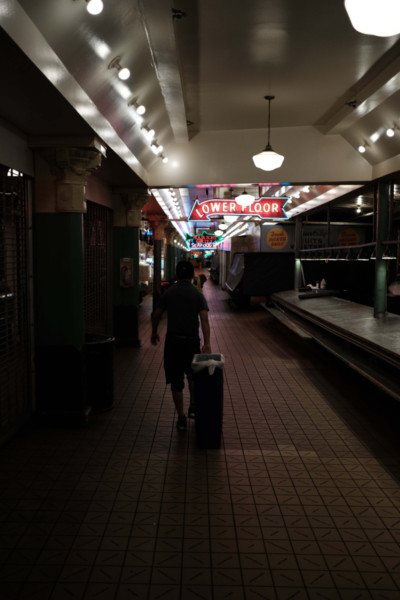Honoring the Unique – The Life Story Project at Sanford

I visited Seattle recently, and stayed in a hostel for the first time. When I got home, I struggled to describe my trip. “My perspective is a little different now,” I said.
Different names for the same place… honoring the unique, dynamic, peculiar, and predictable
In truth, all of our experiences shift our worldview (just a touch). Today’s interactions, reactions, and decisions shape/inform how we will move through the world tomorrow.
This makes us unique, makes us dynamic, peculiar, and predictable. But, sometimes, we can get stuck. We can rely too heavily on our past experiences, and allow fear to control our behavior or prevent us from growing (remember this article on trauma?).
Like when you meet an articulate and gentle dinner date… perfect in every way… only to assign all previous relationship missteps onto this person. Even with all evidence to the contrary. The brain still says it’s a trap!
The Life Story Project at Sanford House
We call this “baggage,” we call it “damage.” I don’t agree with that. We are a culmination of all of our experiences. And we do our best to protect ourselves in the present based on knowledge from the past. That’s quite a beautiful thing.
In my Disease Progression group therapy sessions at Sanford House at Cherry Street, I ask residents to create a “Life Story.” The Life Story includes major events (good and bad), influential relationships, accomplishments, accidents… It describes addiction history like treatment stays, lapse/relapse, coping skills, and aftercare goals.
We find our similarities, honor our differences, and celebrate our resilience. Each group member has an opportunity to share their Life Story in any way that feels comfortable to them. Some folks write a narrative, others create an image, write a poem, or organize a color-coded chart. These sessions are sacred and special. Clients identify the consequences of their substance use. As a group, we encourage vulnerability and honesty.
Sometimes we laugh, sometimes cry… but always recognize the growth of the presenter.
I’ve been facilitating this group for a while, and I can tell you there are some enduring motifs. In clinical terms, we call these commonalities “aspects of Substance Use Disorder (SUD) progression.” Not everyone in recovery identifies with every item on the list. (Unique, dynamic, peculiar, predictable folks we are, after all.) But most residents recognize a few on their journey towards a new life in recovery.

In truth, all our experiences change our world view (just a touch)…
Enduring SUD Motifs:
Something’s Missing
A sense of discomfort, sadness, or that. “Something’s wrong with me”. This often begins in childhood, and can create a hunger to relieve or escape the feeling.
Biological Reinforcement
Naturally high tolerance for the substance upon first use and/or few perceived physical consequences of use. For example, “I don’t get hangovers.” Or, “I keep up with seasoned drinkers.” Or, “If I can make it to work after a night of heavy drinking, I must not be overdoing it.” (See this article re: early predictors of an SUD.)
Dependence
Relying on the substance as medication. For example, “I can’t spend an evening with my family without being intoxicated.” Or, “I need my substance to enjoy sexual intercourse.” Or, “I use my substance to relieve feelings of anxiety around my coworkers.”
Euphoric Recall
Selectively remembering positive aspects about using. “Everyone thought I was funny” or “I didn’t argue with my partner”. And ignoring the negative, “I shattered a wine glass at the restaurant” or “I drove my neighbor’s children while intoxicated”.
Pattern of Heavy and Regular Use
Crafting an addiction-centered subculture. For example, “My routine, environment, and relationships center around my use which is my first priority.” Or, “I invite people into my life that support my use, and distance myself from those who do not.” Or, “Most of my decisions depend on obtaining, using, or hiding my use.”
Withdrawal
Including sweating, poor appetite, tremors, vomiting, low or irritable mood, and panic. Even after developing insight, severe withdrawal can lead folks back to their substance to alleviate suffering. Often, medical assistance is necessary to manage withdrawal symptoms and safety detox the body.*
*By no means is this list comprehensive. For more information about SUD progression, visit www.samhsa.gov. Always do your own research. Stay curious.
A Culmination of Experiences
I cannot stress this enough: We are all dynamic, multi-faceted individuals with unique perspectives. Two people, watching the same event, will see it differently. They will process it differently. It will affect them differently. And for this reason, it’s our responsibility never to assume to wholly understand someone else’s experience. In doing so, we rob that person of their true feelings (which may be different than what we assume). Additionally, helping someone understand our perspective requires patience and openness.
Certainly, the Sanford House residents are women in recovery. But they’re also mothers, daughters, doctors, animal lovers, and artists. They are in recovery, and they are sensitive, funny, intelligent and kind. These women have raised children, built careers, kept secrets, grown in and out of love. Their Life Stories portray women who have lived full and complex lives.
But, undeniably, life is dulled in active addiction. We don’t express who we truly are, who we’re meant to be. Addiction stops us from exploring our passions and loving one another fully. I’ve heard it time and time again.
So, if we are a culmination of all of our experiences, shouldn’t we use that knowledge to move forward? If we learn from our darkness – express our life stories – instead of letting our darkness keep us stuck, we are better positioned to do so.

The author – adding to the culmination of her “Life Story”


